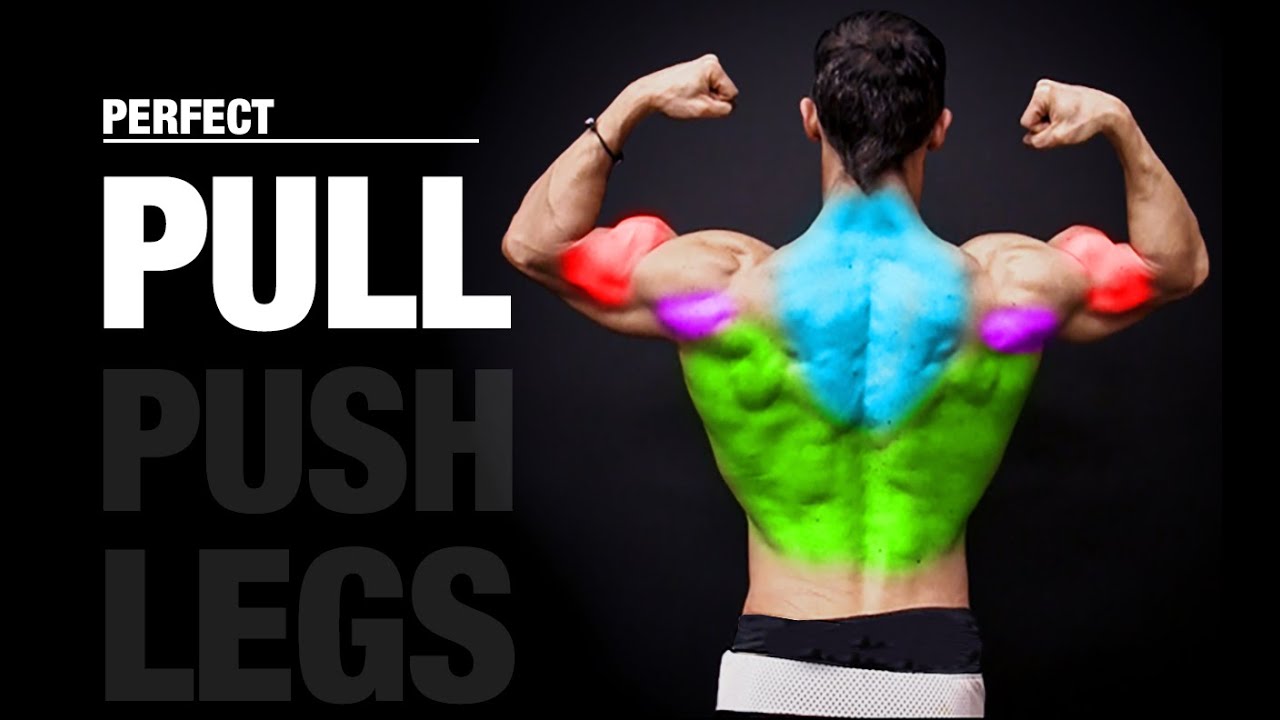
PUSH-PULL-LEGS SPLIT: PULL WORKOUT
It’s tried and true. It’s a classic training split. And it works.
I’m talking about Push-Pull-Legs Split programs or a traditional PPL. Today, I’m going to cover show you my favorite PULL workout.
Push-pull workouts like this are going to focus on muscle hypertrophy or muscle growth in the major muscle groups. In my opinion, PPL is the most efficient workout split.
You’ll get everything for this pull workout routine – all of the best pull exercises, the schedule, the sets, the reps, the rest intervals, the intensity level… everything you need to get started toward major strength gains right away!
Before we get started, I want to cover two things with you.
The first thing is what a push-pull-legs split actually is and how the split is scheduled.
The second thing I want to go over is the different muscle groups that pull workouts target. That way we’ll be on the same page, and you can use that mind-muscle connection to make your pull workout even more effective!
WHAT IS A PUSH-PULL-LEGS SPLIT?
First, let’s make sure we’re on the same page. What am I talking about when I say a Push-Pull-Legs Spilt?
During a push workout or Push Day workout, you’re focusing on the upper body muscles that push, which consist primarily of chest exercises, shoulder exercises, and triceps exercises. You’ll train all of those push muscle groups on that one day.
An example of a Push Day exercise would be a Barbell Flat Bench Press.
On a different day, you’ll have your Pull Day – that’s what I’ll be covering today.
During your pull workout, you’ll focus on the pull muscles. In the most basic sense, pull muscle groups are the back and biceps muscle. But there’s a lot more to it, as I’ll explain below.
An example of pull exercises done a Pull Day exercise would be Dumbbell Bent-Over Row.
Finally, you’ve got your Leg Day, which, as you know, you should never skip.
HOW TO SPLIT UP A PUSH PULL LEGS WORKOUT
How are you going to split up these workouts for mass throughout the week? Well, you have two options, both of which have you training six days per week:
These are a Synchronous Split or an Asynchronous Split.
SYNCHRONOUS SPLIT
You can choose to repeat the three-day cycle for six straight training days before taking a day off and then repeating it all over again.
ASYNCHRONOUS SPLIT
Or you can perform these three workouts and then take a day of rest. After your rest day, you jump right back into the three days of training. This is called an asynchronous split.
You can opt for either one, but I favor (and highly recommend) following an asynchronous split six days per week.
Since your goal is muscle growth, adding in the days of rest between your legs and pull sessions is going to be very important for recovery and results.
The only catch is that these rest days tend to be unpredictable, and some of you might not like that. But if you don’t mind a shifting day of rest, stick to the way I’m about to lay out the schedule.
With that being said, I’m going to break down what you’ll be doing in both of your Pull Workouts.
Why two different Pull Workouts?
I’m providing you with two different pull workouts because Pull Workout One will actually set up and then complement Pull Workout Two and vice versa.
You’ll get a well-rounded approach that is ideal for promoting maximum muscle growth in your pull muscle groups.
Before I jump into the workout, I want you to better understand the muscles that you’ll be targeting in both of these pull workouts.
what muscles do pull workouts work?
Let’s start by understanding the anatomy of the major muscles in the upper body that you’ll be targeting in the Pull Workout.
Activation in these muscles is going to be incredibly important for seeing results.
THE LATS (LATISSIMUS DORSI MUSCLEs)

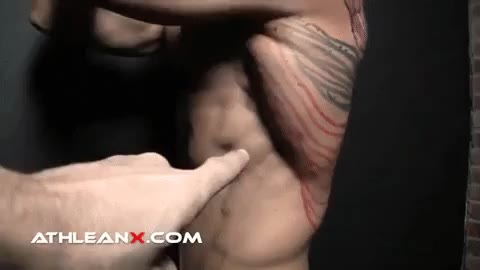
UPPER AND LOWER TRAPEZIUS MUSCLES


LOW BACK / ERECTOR SPINAE

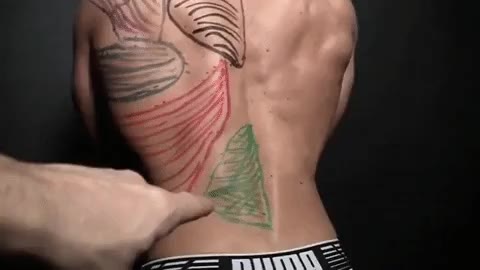
ROTATOR CUFF

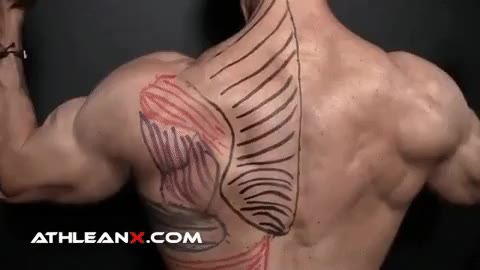
TERES MAJOR

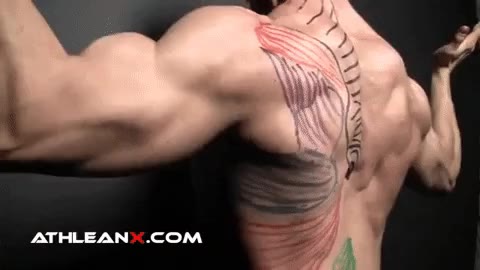
SHORT HEAD (INNER BICEPS BRACHII)

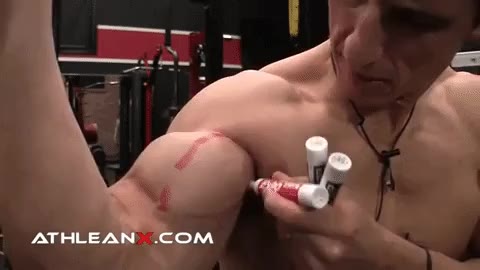
LONG HEAD (OUTER BICEPS BRACHII)

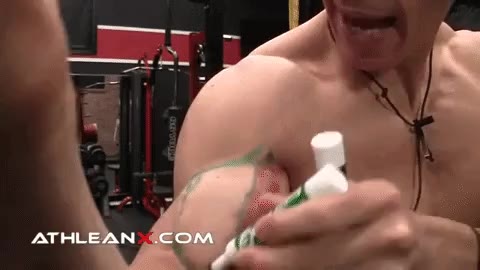
BRACHIALIS

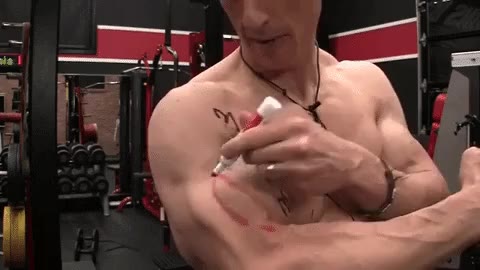
Now that you know which muscles to focus on during these training sessions, let’s dive into Pull Workout One.
PULL WORKOUT ONE
We start with one of the basic foundational compound movements for pulling muscles: the Deadlift.
I’d consider the conventional deadlift to be an advanced exercise, so make sure you have proper form and execution throughout this one to avoid risk of injury. Pay attention to proper form in all of your barbell compound exercises.
DEADLIFTS


From the starting position, remember to watch those core muscles, and be sure to bring the barbell all the way up to your thigh.
You’ll perform this Deadlift as a one by five. But that doesn’t mean you’re performing just ONE set.
You want to ramp up to that with four warm-up sets to get to 80% of your one-rep max for your one set of five.
To ensure progress week after week, I want you to add weight in your next session when you encounter this workout again, but only if you’re able.
CHEST SUPPORTED ROW

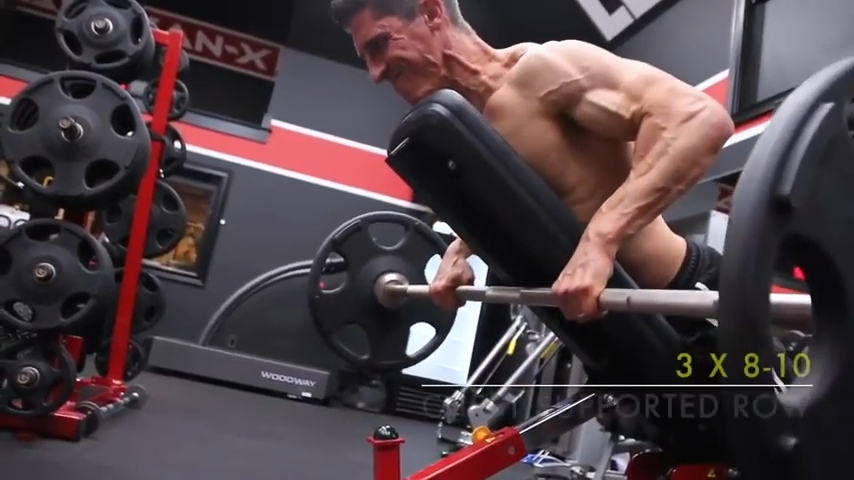
The next effective exercise is the Chest Supported Row, and you’ll do this for three sets of eight to 10 reps.
Sure, Barbell Rows are great, but as a trainer, I like this rowing exercise for a couple of different reasons:
This position is going to help offload a little bit of that pressure on the low back.
But more importantly, this exercise targets the upper back muscles.
I am a tremendous believer that most people don’t do enough upper back strengthening work, and this is the perfect exercise for doing that IF you use proper form.
The Chest Supported Row focuses more on the upper back, especially if you flare out your elbow joint a little bit.
But if you’re feeling fatigued from the deadlift and the upper back is starting to feel fatigued as well, all you have to do is tuck your elbows. This will shift the focus to the lat muscles.
With that said, I encourage you to try to keep that upper back work going by keeping those elbows a little bit out to the sides.
DUMBBELL PULLOVER

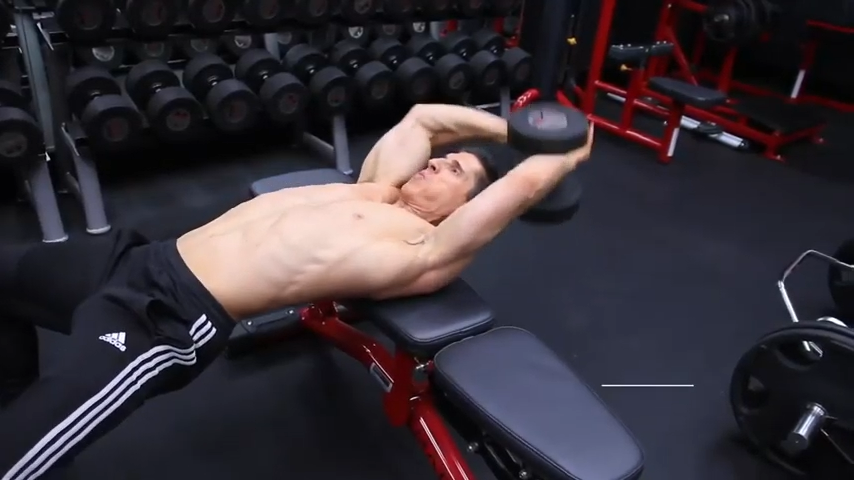
We then come into our next powerful pulling exercise with the Dumbbell Pullover. This pull exercise is going to give your upper back a bit of a reprieve and focus more on the lats.
Now, there’s a reason why Arnold called this the squat of the upper body: It is a tremendous way to build muscle mass in the lats.
With your feet flat on the floor, brace your core. You’ll get a great stretch in the bottom position. During the concentric contraction, you’ll power through to the starting position by focusing the contractions on the lats.
You’ll perform two to three sets in the 10 to 12 rep range, choosing a weight that allows you to fail within that range.
If for some reason you’re starting to do more than 12 repetitions in subsequent workouts, you need to increase the weight.
But this works both ways, if you can’t get into that rep range because you’re using heavy weight, you need to lower the weight load you’re using.
Also, one other note: If you want to change it up, you can use a cable machine and a flat bench for this pull exercise instead of dumbbells.
DUMBBELL HIGH PULL

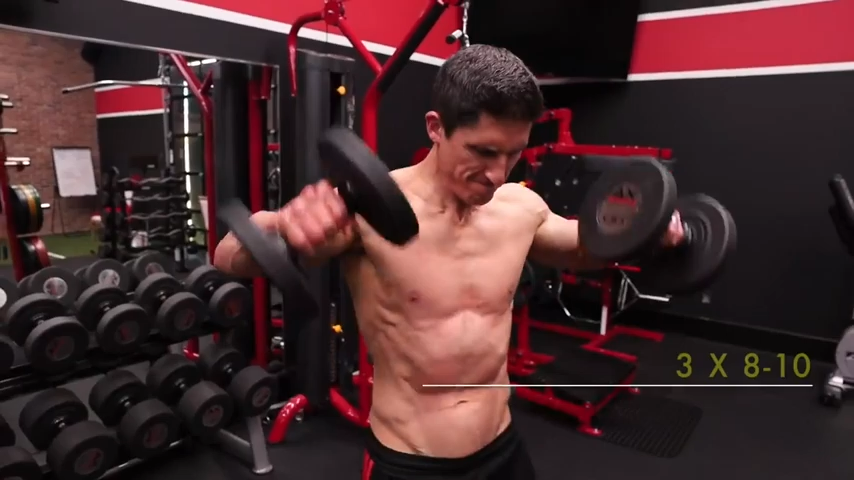
It’s time to return to the upper back with the Dumbbell High Pull.
Some might look at this and say, “Jeff, I think you’ve lost your mind because this looks like an Upright Row with dumbbells.”
It’s actually the direct opposite of an Upright Row.
Mechanically for your shoulder, this is external rotation, not internal rotation like we would in an Upright Row.
So, it’s the perfect exercise and one of the safest things you can do to train your shoulder muscles and rear deltoids. Not to mention, you’ll bulletproof them.
At the same time, you’re shifting that focus to a vertical pull and getting the upper traps, upper back, and posterior deltoids involved.
Perform three sets of 10 to 12 repetitions.
BICEP CHIN CURL

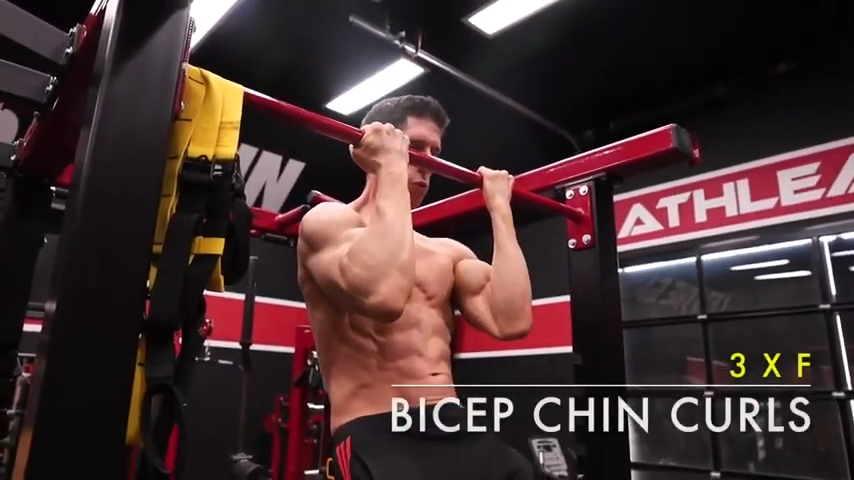
You now move to the bicep curl portion of this pull training plan.
When you’re looking for a hypertrophy focus split, you’re going to want to have some direct bicep curl work with a shoulder-width underhand grip.
And one of my favorite ways to do this is with the Bicep Chin Curl, which is featured in most of my brutal bicep curl workouts.
This is a fantastic exercise for biceps muscle activation.
It’s always a good idea to do some decompression work following a deadlift.
And that’s exactly what you get to do here by simply hanging from the bar.
But instead of doing a traditional chin up, you’ll do something called the chin curl. This is where you will close the angle of the elbow down as you approach the top of the bar.
So, you’re mimicking the mechanics of a Barbell Curl.
Instead of bringing the bar up to you, you bring your body to the bar, but make sure to keep a slight bend in the elbows.
Perform three sets to failure, and then immediately jump into the next pull exercise because this is a superset.
OVERHEAD TRICEPS EXTENSION


You’re going to superset the Bicep Chin Curl with a basic Overhead Triceps Extension.
Why a triceps exercise targeting push muscle groups on Pull Day?
You’re going to see this as we build out this entire PPL split and there’s a reason for this. You want to get some additional volume on the arms that oftentimes get shortchanged in typical PPL splits.
What you’re getting here is some long head work for the triceps.
As always, be sure to keep that bend in the elbows and focus on a strong contraction. Perform three sets of 10 to 12 reps.
ANGEL AND DEVIL


No pull workout is complete – no Athlean-X workout is complete – without an additional corrective exercise to wrap things up.
And one of my all time favorite movements to hit the entire posterior chain, to round out this perfect pull workout, is the Angel and Devil.
The Angel and Devil targets your entire back! Every single muscle of the upper back, the mid-section, the lower back, the lower traps, the paraspinals – they all get activated in this exercise.
This is kept in a much higher rep range of 15 to 20, for three sets, with the focus being on quality form and performance, not quantity.
Okay, guys here’s the wrap up for your first Pull Workout routine.
PULL WORKOUT TWO
And this brings us into your second pull workout, which is going to compliment Pull Workout One, but at the same time, it can also stand alone.
Even as a stand-alone workout, I’d still recommend alternating this with Pull Workout One.
Pull Workout Two starts with Snatch Grip Deadlifts.
SNATCH GRIP DEADLIFTS

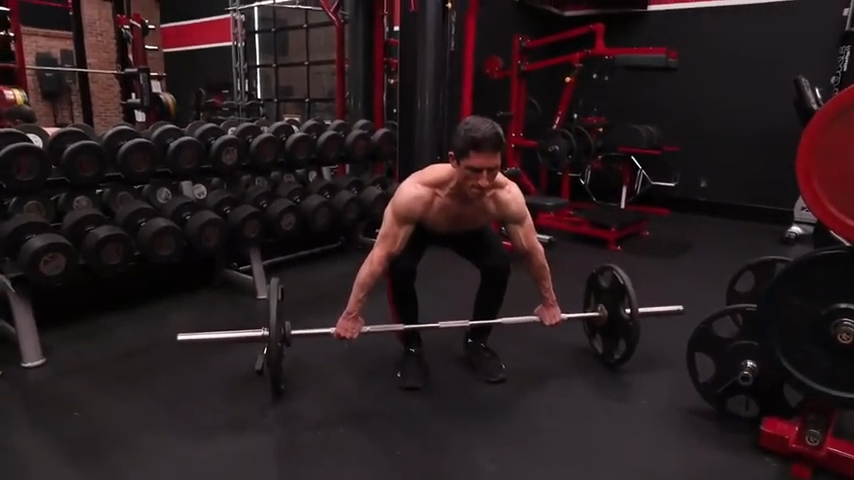
Yes, you’re deadlifting again, but not entirely with the same focus of other heavier weight compound exercises.
This is not meant for progressive overload strength movement patterns. It’s meant for reinforcing the hinge pattern, which we know is incredibly important.
What’s more, you’re performing this exercise to make sure that you’re getting some additional volume, but not necessarily with a heavier load. Remember guys, quality over quantity here. No need to risk injuries because of your ego. Stick with light weight.
Perform three to five sets with a weight that you can handle for about eight repetitions. Again, forget about hitting your one-rep max.
WEIGHTED PULLUP

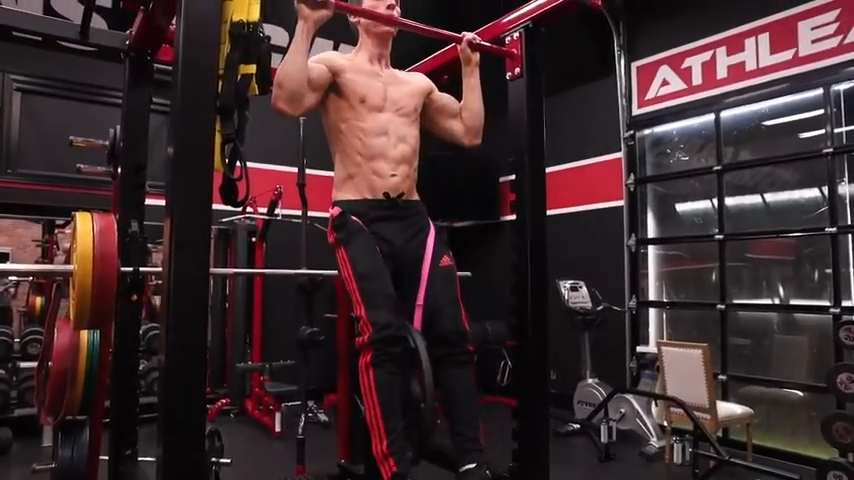
You’ll move right into the second exercise of Pull Workout Two, which is one of my favorite classic compound pulling movements that lifters don’t do often enough. It’s the Weighted Pullup with an overhand grip.
This one I love because it builds the lats and improves your overall pulling strength, but you have to make sure that you’re loading heavy enough.
The goal is to perform between six to eight reps on the pull-up bar. So, if you’re able to do a lot more pull-ups, you’re going to have to strap some weight around you to get within this range.
Likewise, if you can’t get anywhere near six reps, use lighter weight.
Now, one thing I’ll point out is if your grip was somewhat taxed by the Snatch Grip Deadlift, then you’d want to switch the order here.
Starting position is with hands in a shouler-width overhand grip on a pull-up bar or cable machine pull-up bar. Pull your chin up to the bar and perform three sets of six to eight reps.
DUMBBELL GORILLA ROW

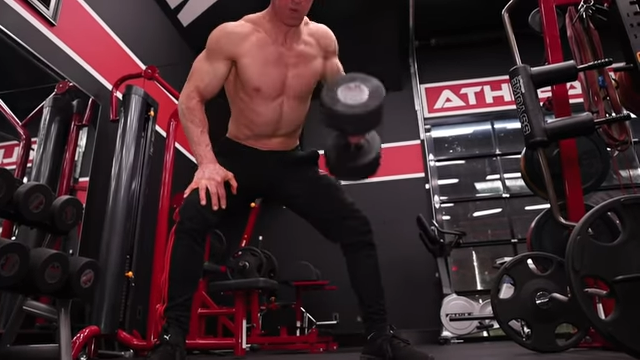
Next up, you have the Dumbbell Gorilla Row. This is a much better option than single-arm Dumbbell Rows. Why?
I don’t like that exercise in terms of the asymmetrical setup. Having one knee up on a flat bench brings with it the inherent risk of developing a hernia.
When I can, I like to make sure we avoid movement based on the knees and stick with a standing movement.
With this row, get grounded and balanced around the dumbbell and then pull from the floor.
And we also have that additional benefit of allowing the elbow to either stay tighter to our sides depending if we’re looking for more of an upper back or lat focus.
Perform three sets of 10 to 12 repetitions on each arm.
STRAIGHT ARM PUSHDOWN


Next, you have a classic cable exercise, the Straight Arm Pushdown.
Starting position is standing with your feet shoulder width apart at a neutral distance from the cable machine and keep your core tight.
This almost starts to cross over a little bit into that corrective category because you have that important straight arm scapular strength that you can build with this exercise.
You’re basically extending the range of motion from what we had on the Dumbbell Pullover.
That gives you a perfect opportunity to trigger that hypertrophic effect, especially on the latissimus dorsi.
You’ll keep the rep range a little higher with two or three sets of 12 to 15 repetitions.
BARBELL BICEP CURLS


You’re back at the arm focused portion of this effective muscle building routine, and you’ll perform the Barbell Curl.
Get a strong contraction and bring the barbell to shoulder height.
Don’t shy away from going heavy here as you perform three sets of six to eight repetitions.
TRICEPS PUSHDOWN

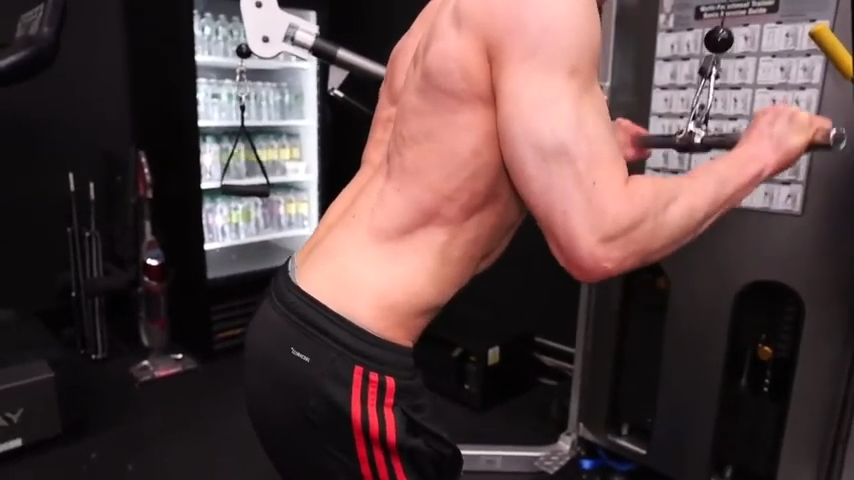
Just as you did last time, you’re going to superset that with a triceps exercise to get additional volume here.
But this time the exercise selection is not going to focus on the long head. Instead, you’ll focus more on the lateral and medial head of the triceps with another cable machine exercise, the classic Triceps Pushdown.
It’s three sets of six to eight on the barbell curl, leading into three sets of 10 to 12 in superset fashion on the cable machine Triceps Pushdown.
FACE PULL

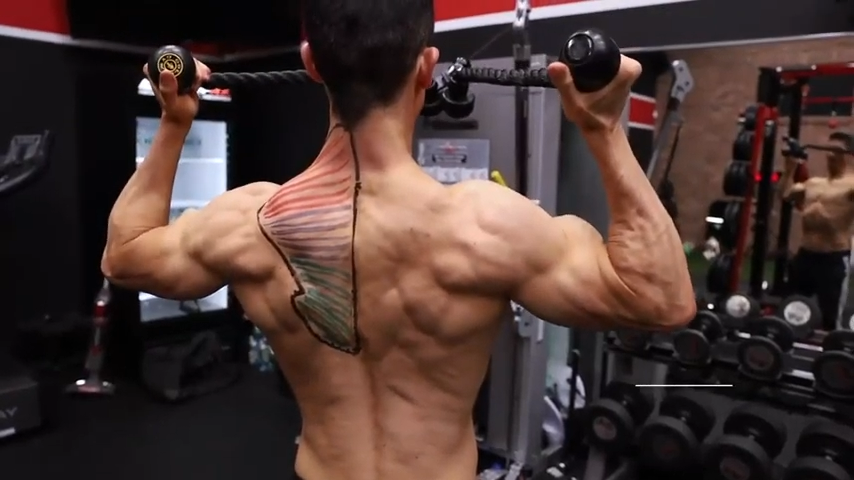
Which then brings us to our final and favorite corrective exercise of all our pull workouts – the Face Pull.
This is one of my favorite pull exercises because it’s a classic exercise with the capability of hitting the entire upper back, the mid-scapular area, and the rotator cuff muscles.
It’s one of the reasons why I placed it today instead of in the first pull day routine, which I thought focused a lot on the upper back.
This is the perfect time to do this, guys. And as always, with all of your corrective exercises, focus on quality first, not quantity. Focus on proper form, not numbers.
Perform three sets of 15 to 20 repetitions.
Just like with the other Pull Workout, be sure to write this down. Here’s the summary of what I just covered.
And with that, guys, you have your Perfect Pull Workout – parts one and two. Remember, you’re going to do these in alternating fashion from week to week.
Most importantly, don’t forget to pair up these workouts with the best push day workout and leg workout for a complete full body workout routine.
If you’re looking for a training program that will help you build muscle mass and incorporates all the best splits and techniques, you’ve come to the right place. See which of our ATHLEAN-X programs best fit your needs! We’re here to support you wherever you are on your fitness journey no matter where you are in terms of fitness level.

- The Push, Pull, Legs (PPL) Workout Split is one of the most used training splits for building muscle mass and functional strength.
- The order of the workouts can be done using a synchronous or asynchronous split six days per week, but I recommend taking a day of rest after completing the first three workouts. It does make rest days more unpredictable because they rotate, but the benefit is that it provides the much-needed muscle recovery time to allow for overall better gains.
- The goal of the first pull exercise in each of the two pull workouts is to hit the posterior chain with a big compound lift – in this case the deadlift.
- The remainder of the exercises in both workouts focus on preventing low back fatigue while overloading the right muscles to maximize that lean and muscular look.
- The combination of these two workouts will serve as your PPL pull workout. Remember to alternate these two workouts each time you encounter your next pulling workout in the calendar.
- When you can, add weight to the exercises you are performing to ensure that you are lifting and reaching failure within the rep ranges prescribed, except for the deadlift variations. Just be sure to focus on perfect form for each exercise.
- Most importantly, don’t forget that these Pull Workouts are one part in the PPL workout. You also have the Push and Leg Workout.
A pull day workout routine is one of the training days in a Push Pull Legs (PPL) workout split. On pull day, you will be training pulling muscles which include back and bicep muscle.
The 5 best pull exercises are:
Abs don’t fall into push or pull workouts. You could choose to train abs on the ‘legs’ training session of a Push Pull Legs (PPL) workout split. However, it’s actually ok to train abs 5-6 times a week since they are a muscle group that’s used in almost all of our activities of daily living. Therefore, you could do a short abs workout on each of your training days.
A pull-push workout is better known as a Push Pull Legs Workout Split. This is a type of workout split in which you work pushing muscles on one training day, pulling muscles the next training day and leg muscles on the following training day. Push Pull Legs splits are typically performed 3 days per week or 6 days per week. This type of training split allows for sufficient rest of each set of muscle groups between training sessions.
REFERENCES

Jeff Cavaliere M.S.P.T, CSCS
Jeff Cavaliere is a Physical Therapist, Strength Coach and creator of the ATHLEAN-X Training Programs and ATHLEAN-Rx Supplements. He has a Masters in Physical Therapy (MSPT) and has worked as Head Physical Therapist for the New York Mets, as well as training many elite professional athletes in Major League Baseball, NFL, MMA and professional wrestling. His programs produce “next level” achievements in muscle size, strength and performance for professional athletes and anyone looking to build a muscular athletic physique.





































